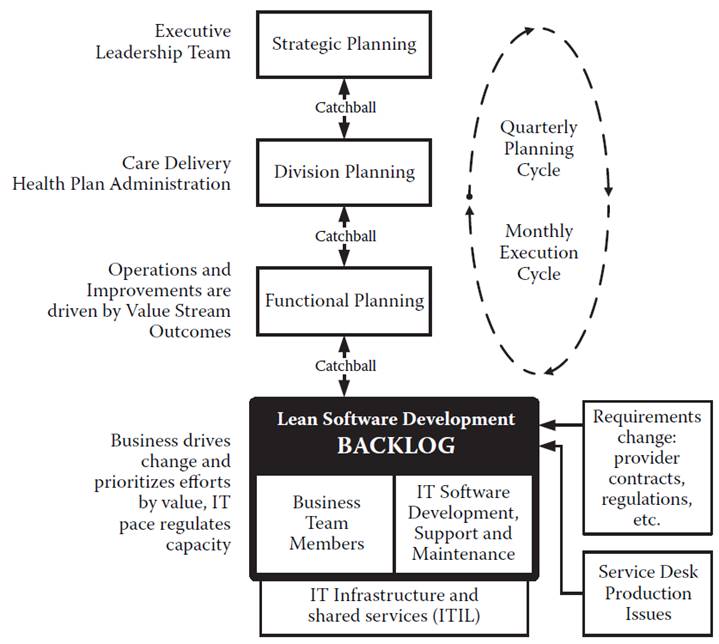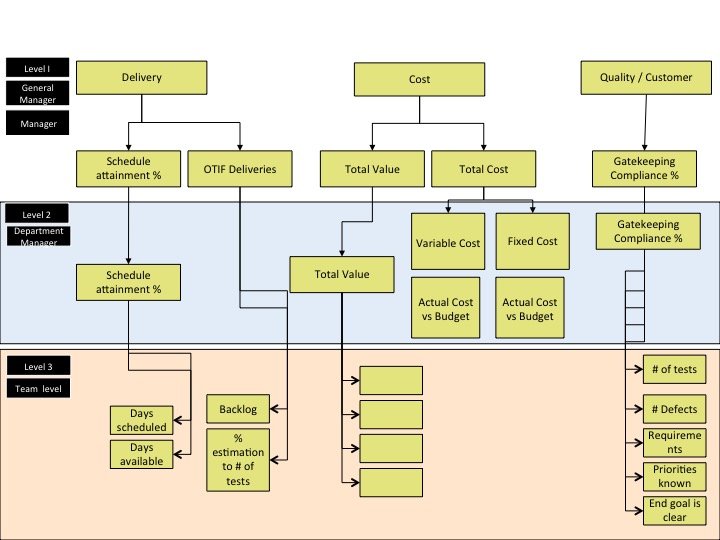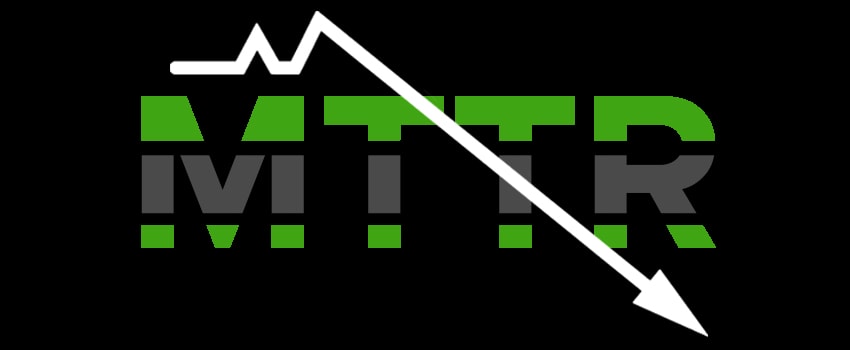
ITSM KPIs: No More Blah, Blah, Blah, Just Boom, Boom, Boom
One of my favorite quotes about metrics and KPIs is:
“Don’t measure me on cost or traditional IT metrics, but on the metrics of the business”
– Jim Fowler, CIO of GE Capital.
It’s a perfect tee-up for me to talk about KPIs in the context of the lean principle or method.
If IT service management (ITSM) is the art of enabling a business via technology (also using people, suppliers, processes, and other fun stuff), then lean is the ability to look at business operations and issues to mitigate or remove them – ultimately for the benefit of a customer. In my opinion, lean is a perfect match for ITSM – let’s call it LeanITSM (but don’t tell the ITSM purists).
The Importance of KPIs
To do LeanITSM (or just ITSM) well, we need a way to know that we are on track with our improvements. This is where key performance indicators (KPIs) come in, though hopefully not KPIs such as this:
This specific KPI was created to show the productivity of developers, using lines of code written as the measure. Could you use or explain this? Well I watched the dismay of management as their developers, when presented with this KPI, said, “We are Agile so this will not work for us. Should we quit or go back to the old way of coding?” It’s a great example of KPIs that are: based on bygone times, complicated, disconnected from business goals, and/or unmotivational. Or, you might say that such KPIs are more-likely to drive the wrong behaviors – often placing quantity ahead of quality.
How Lean Can Help
Lean and ITSM can help everyone to work together, towards a common goal. Both use a lifecycle approach of: creating a strategy, figuring out how to execute the strategy, introducing those steps, checking the results and, via feedback (people or tools), improving that strategy or product. ITSM adds the assistance of technology to the lifecycle.
In lean, the strategy lifecycle is called Hoshin Kanri, where the strategy from senior management is thrown to each level down (“catchball”) such that they can create their own way of addressing the challenges of the strategy. This strategy cascade could be at a business level or at a product level. It doesn’t matter – Hoshin Kanri allows each person to see and set their own way of working to meet the goal.
Lean KPIs
Creating KPIs at the points where work is performed is the lean suggestion for performance measurement, rather than using a top-level-mandated KPI that everyone then “games” to make the boss happy.
The lean model below is for a healthcare organization, and this is the model of choice in DevOps and continuous delivery.

From Lean IT with permission from Steve Bell
Notice the up and down catchball arrows. Inside the catchball “ball” are the goals, and the ball can be tossed in either direction – with KPIs designed to help answer the following questions:
- Did we improve or decline?
- Are we on course?
- Does the impact effect our organization?
- Do we need help?
KPIs provoke a Yes/No response, otherwise they are merely metrics. While metrics are useful, and are sometimes required as part of a KPI, they are not key to helping us fulfill a strategy or request.
Bringing Lean KPIs to ITSM Via the Titanic
ITSM frameworks give clear guidance on the purpose of a KPI: Validate, Justify, Intervene, or Direct. I’m sure you’ve also heard of the Plan, Do, Check, Adjust approach, which when combined together means that:
- You Validate and Justify the KPI in the Plan stage.
- Then you Do
- Then you Validate the performance in the Check stage
- Then Intervene or Direct in the Adjust stage.
An analogy could be in commanding a ship where:
- The captain provides the course and potentially the why.
- The crew performs their tasks accordingly.
- Throughout the voyage readings are taken to confirm course, such that if they are off course they’d be able to adjust.
- The captain does not say how, rather each crewmember determines this against the higher-level goals and sets their own KPI to meet the plan.
How many of us are more likely to do Plan, Do, Check, Arrgggh? Believing that it’s better to tell the captain what they want to hear rather than the truth. The result – Titanic anyone?
KPIs are, or should be, limited in number – although you will ultimately need as many as you need. As an example, if senior management has 5-6 KPIs, then each subsequent layer down could have 6-8 linked KPIs say – but it might be more or it might be less. Finally, KPIs should be set in stone unless it’s agreed that the indicator needs to change.
How Do You Create a KPI?
The first thing you need to do in creating a KPI for any part of your IT operations, including the service desk, is to look at a business target. Can you see what’s required to help achieve the goal or remove the obstacle to achieving the goal? If so, then determine how you would know this was happening and whether you could prove it? Remember, all answers have to be Yes/No.
Next, you’ll need to look at the goal, break it down into your service assets, create a high-level indicator of performance linked to the higher-level goal, and then break it down again until you have enough information to confirm that you are, or are not, on course. The example below is a KPI tree, with each KPI having an owner, definition, purpose, equation, frequency, dependency and, most importantly, the required response when checked.

This particular KPI tree was used as a dashboard, first on a large whiteboard that was manually updated, then on screens for all members of the team and management to see. The status colors used were: green – all is well; amber – this KPI is not significant for this period so ignore; and red – we have a problem so can all crew please see if they can help (including management).
Catchball: the Essence of Strategy Management?
For the above to work, two things must occur. First the team has to create the KPIs that will align to each level and help them steer the correct course. Secondly, the team needs to have clear direction on when to involve senior management on issues or how to report generally about what is happening. This approach aligns to the ship story where the crew came to the aid of others as required, with the captain involved depending on the situation. It’s classic catchball and LeanITSM.
In summary, KPIs should be collaboration and communication tools. Create and use them wisely and you’ll keep your organization in business and on course.






